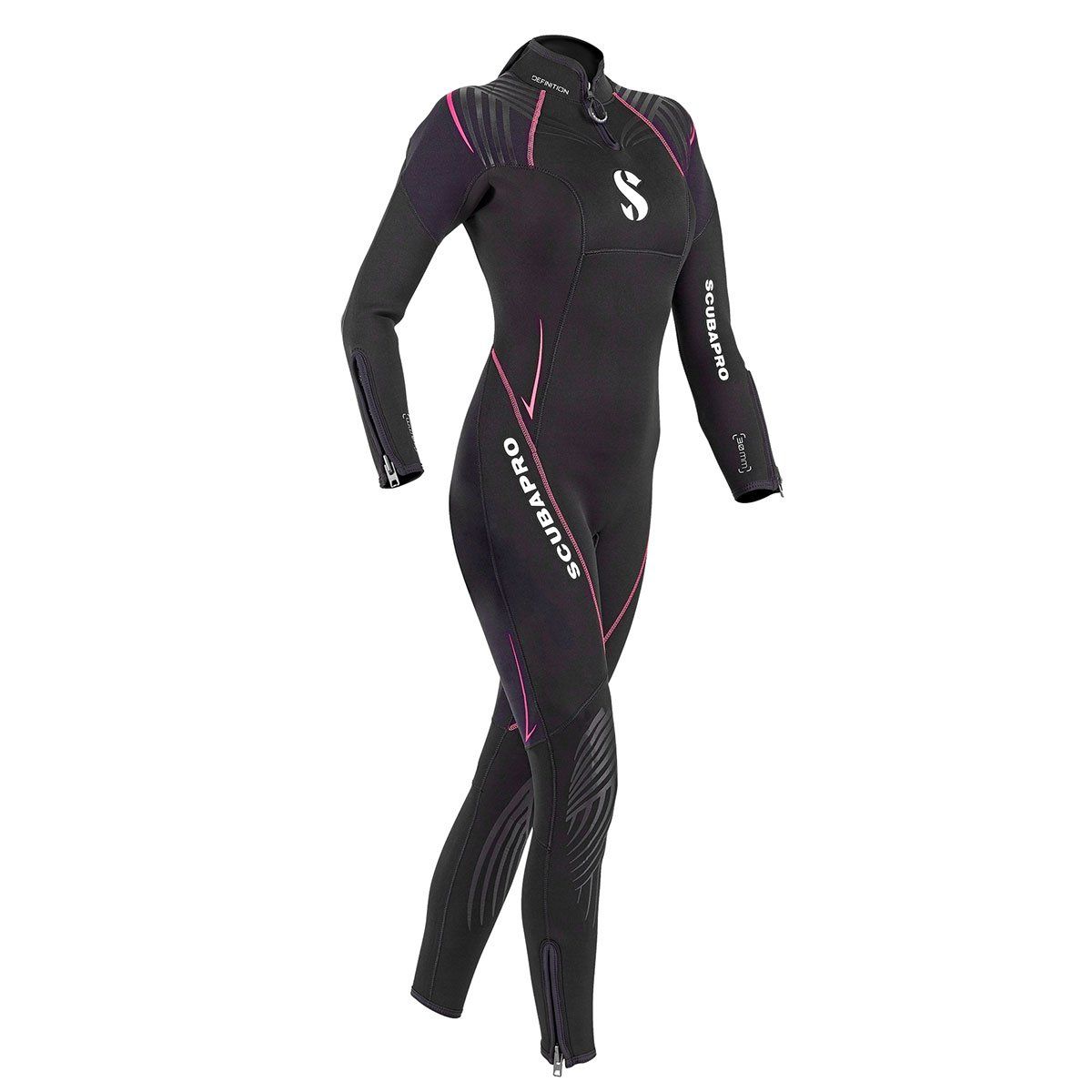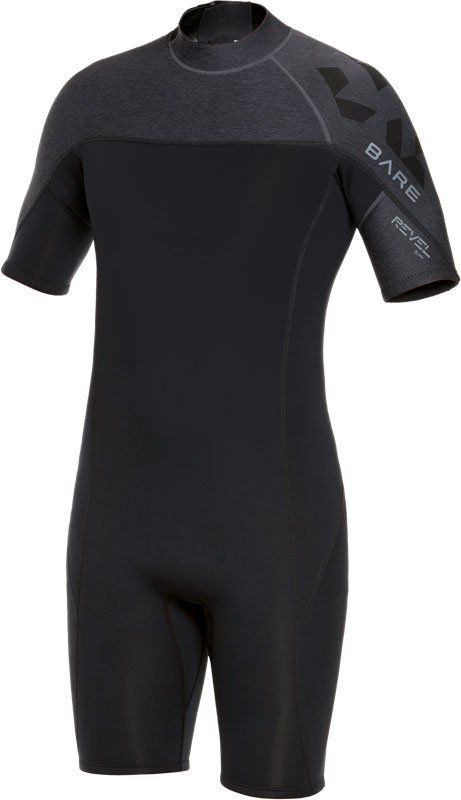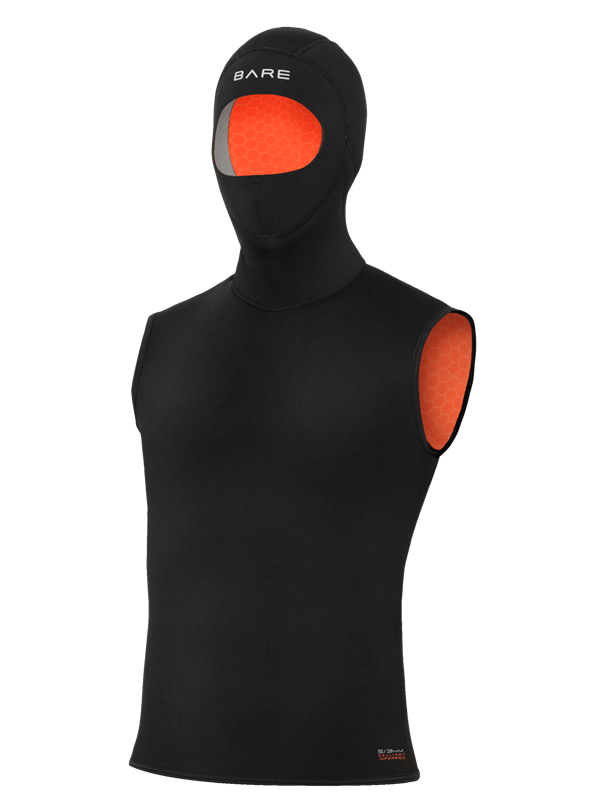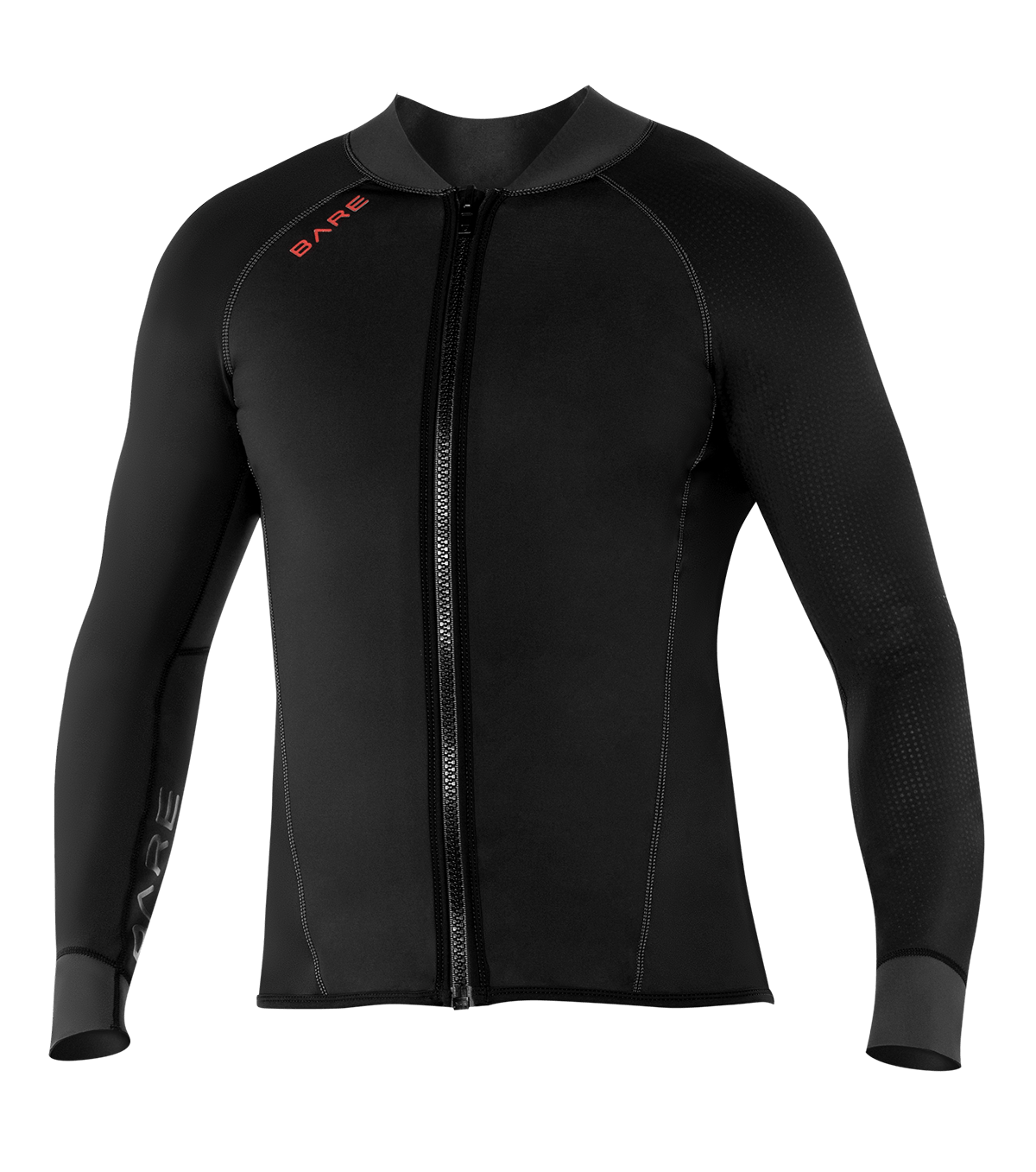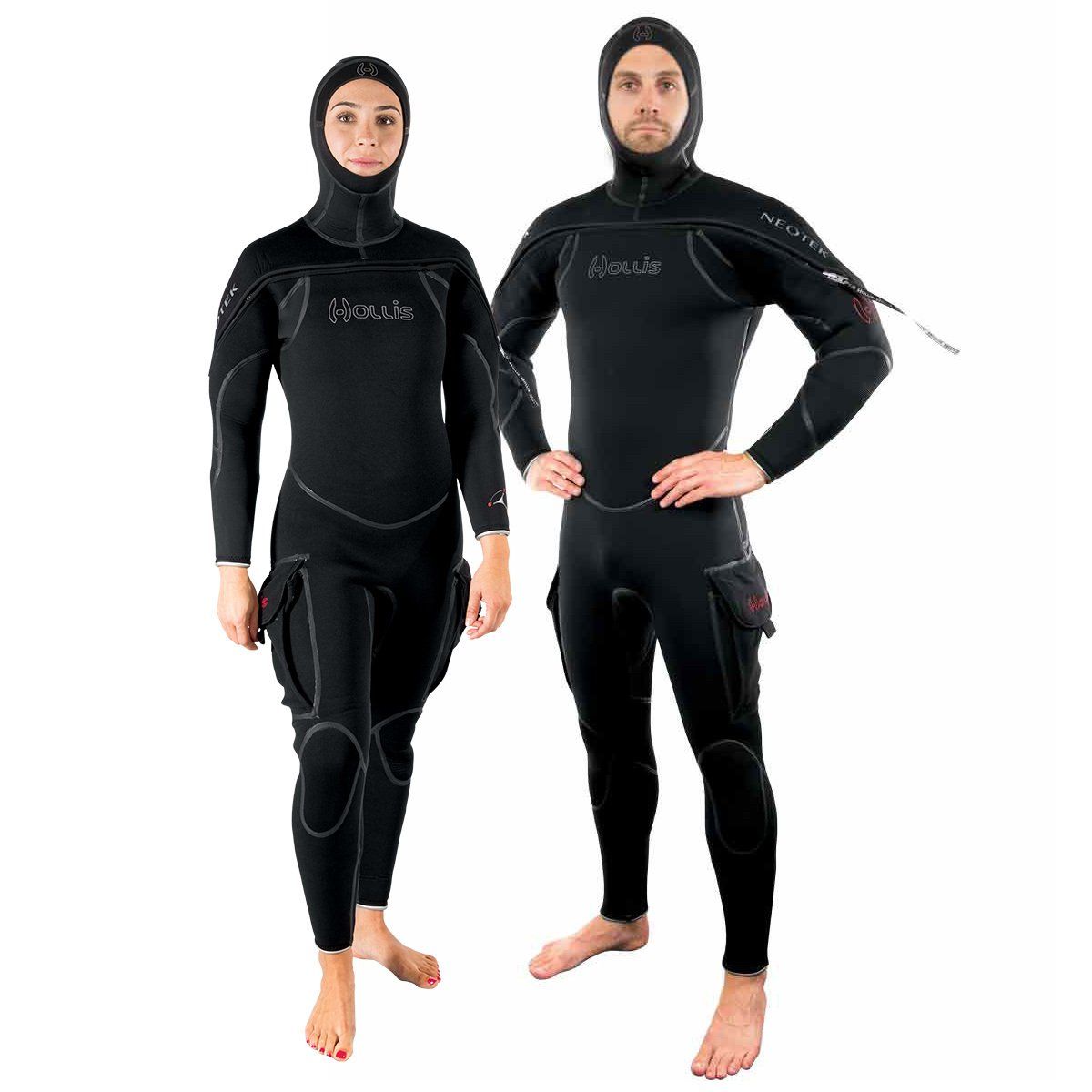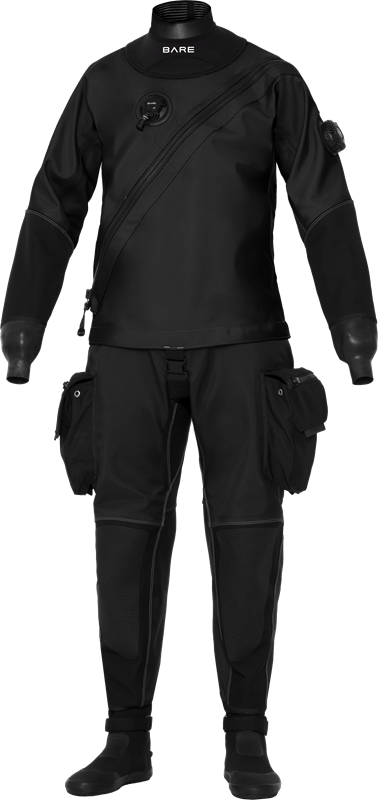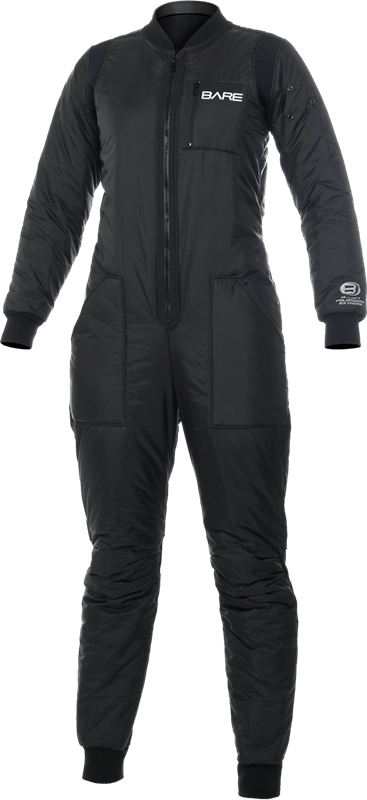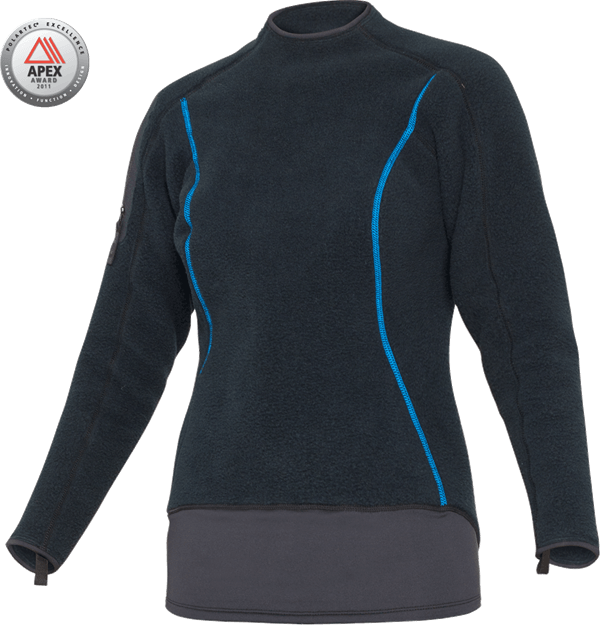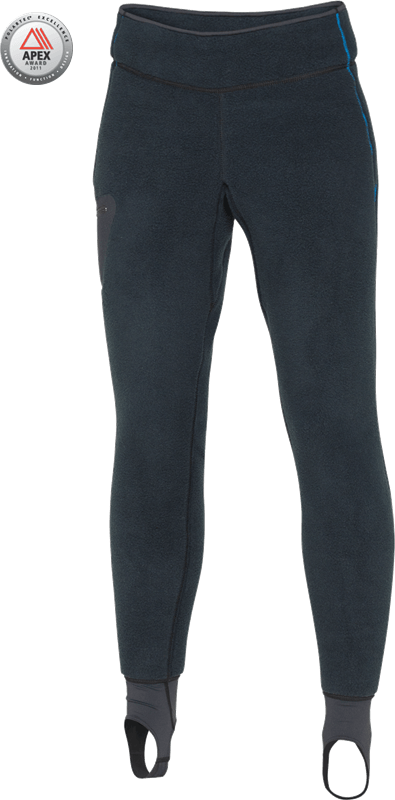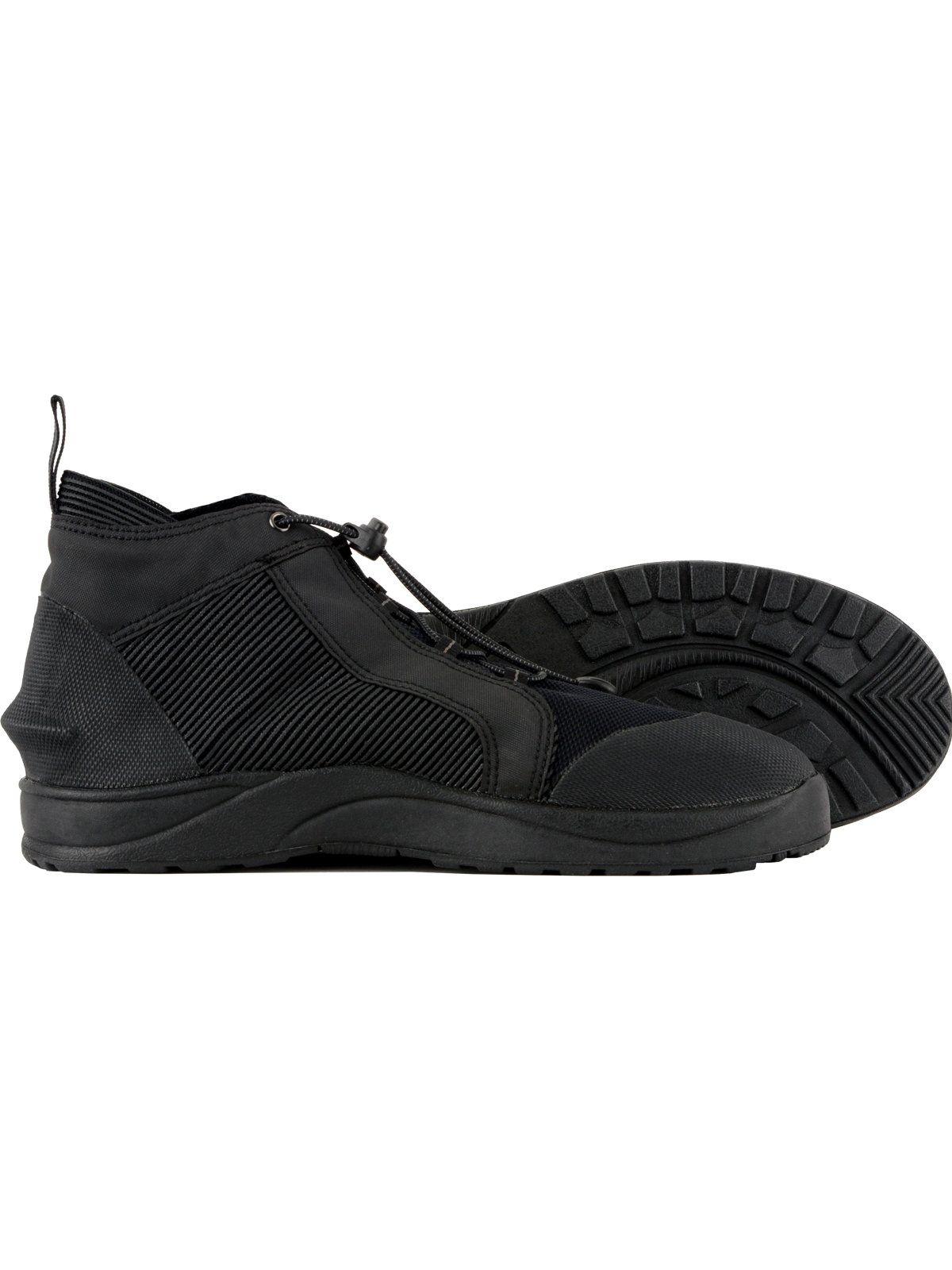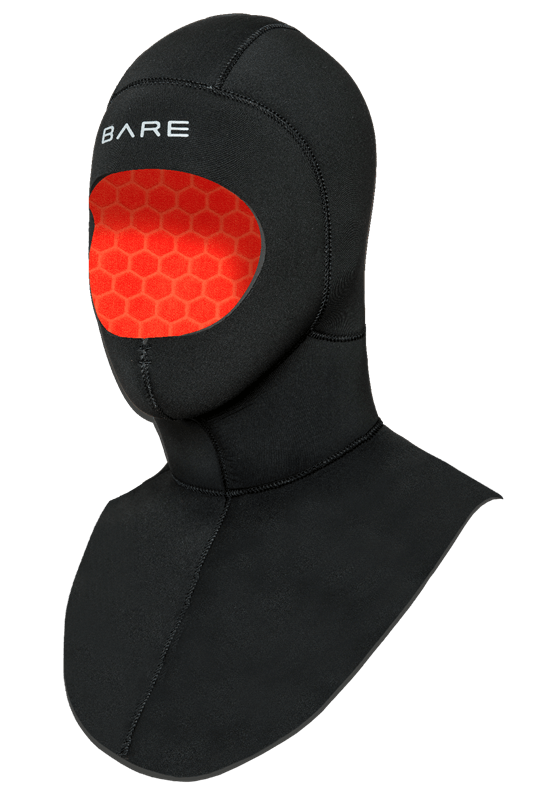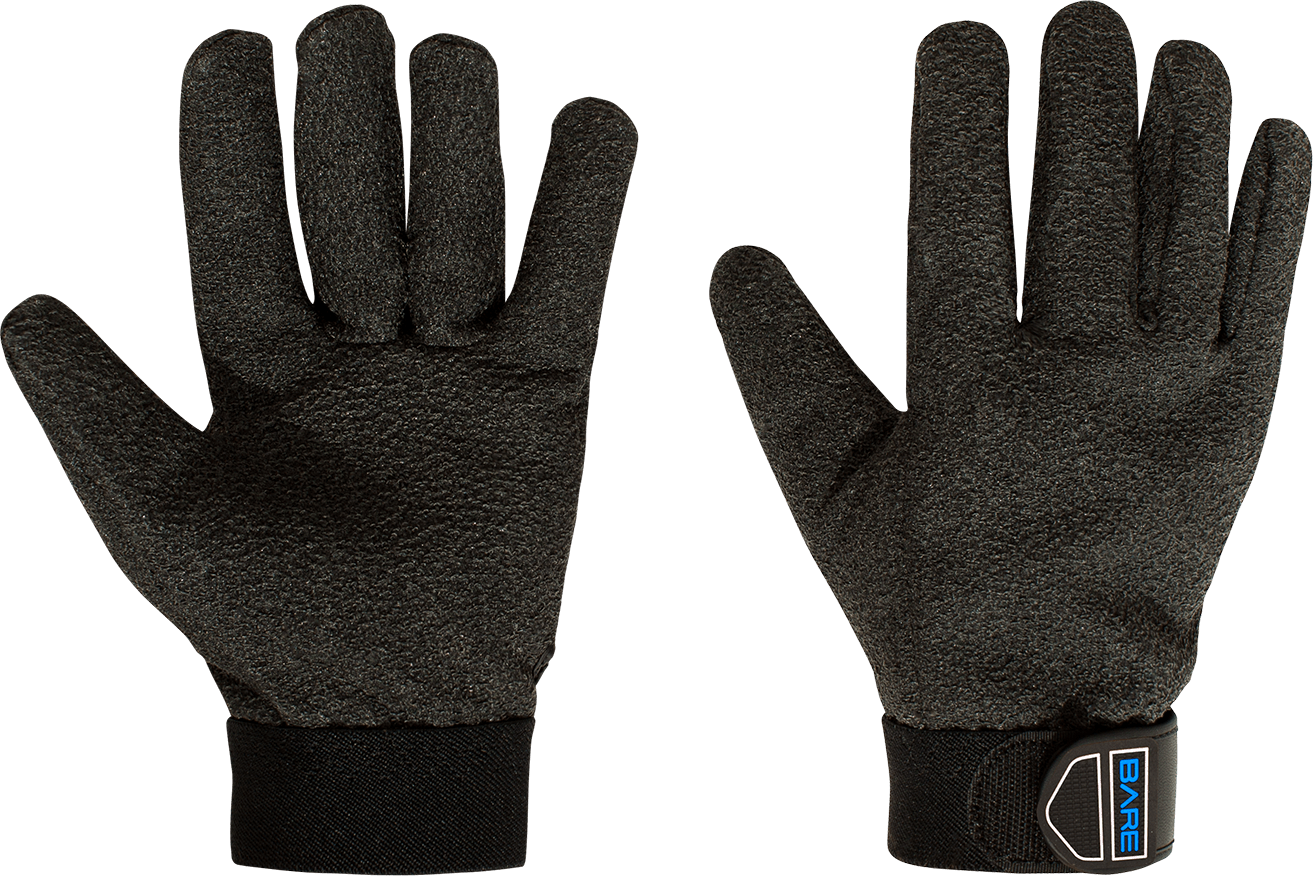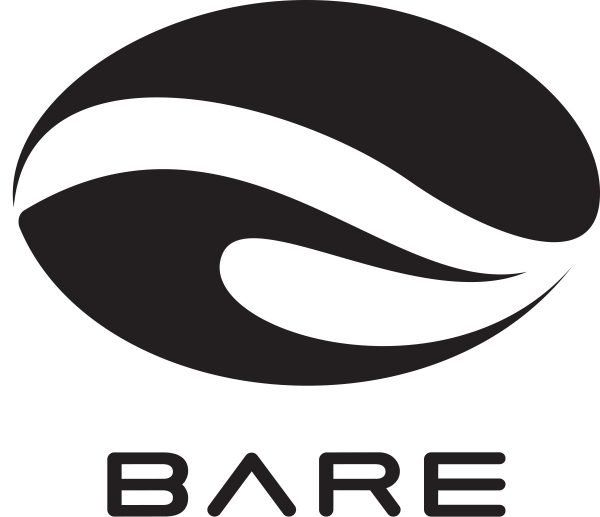Purchase Exposure Protection
Wetsuits
How a wetsuit works
A wetsuit keeps you warm by trapping a thin layer of water between the suit and your skin. Your body warms up the water and you feel the warm water inside the suit instead of the cold water outside the suit. Remember, in order to get the most out of your wetsuit you've got to put some water into your wetsuit!
Wetsuit do more than keep you warm. That's why we call them exposure suits. Wetsuits protect you from things that scrape and sting. They also protect you from too much sun!
Wetsuits are made out of neoprene, a material that is basically foam rubber made to be worked like fabric. The tiny air bubbles trapped inside the material provide the insulation you need to stay warm. Not all neoprene is made the same. If you have a triathlon, swimming, or surfing wetsuit you will destroy it if you use it for diving. The neoprene used to make wetsuits for surface sports will "crush" at depth. Your 3.0mm suit will become a 1.0mm suit and it will no longer keep you warm.
How to fit a wetsuit
In order for a wetsuit to do its job it has to be able to trap water in the suit. That means you have to have snug wrist and neck seals or the warm water will get flushed out by cold water every time you move. In addition to snug seals a full body suit should have arms that reach your wrist bones, legs that reach your ankle bones, and kneepads that cover your knees and upper shins.
Check the size by moving your arms around and raising them over your head. Bend over at the waist or kneel on the floor. You should be able to move freely without pulling too tightly on any of the seams or the zipper.
Wetsuits are available in men's, women's, and kid's sizes.
Thickness
Common thicknesses include 1.5mm, 3.0mm, 5.0mm, 7.0mm. The larger the number, the thicker the material and the warmer you will be. Unfortunately, thicker material makes a suit harder to put on and take off. It's a trade-off, warmth for ease of use.
The thickness you need depends on your tolerance for cold. Most divers use a 3.0mm wetsuit throughout the Caribbean where the water temperature is about 80 degrees, thinner suits for warmer destinations, and thicker suits for colder destinations. A 5.0mm suit is common in Hawaii where the water temperature is about 75 degrees.
The good news is you don't have to buy a different wetsuit for every destination. You can layer! If you have a 3.0mm suit and need a little more protection you can add a hooded vest, a short suit, or a neoprene shirt/vest. You have lots of options to choose from to get just the right level of comfort.
Style
The most common style of wetsuit is the full body jumpsuit. It covers everything but your hands, feet, and head. Short suits or "shorties" have arms that stop above your elbows and legs that stop above your knees. These days you can also buy neoprene short and long sleeved shirts and shorts and long pants. Hooded vests are also popular with dive travelers.
Semi-Dry Suits
How a semi-dry suit works
A semi-dry suit is actually just a really warm wetsuit. Semi-dry suits are used in environments where a regular wetsuit just isn't enough. These suits are often made from thicker neoprene, 7.0mm and 8.0mm is common. The wrist and ankle seals are bigger and heavier in order to minimize the amount of water flowing through the suit. Since these suits are designed for cold water, hoods are often attached.
How to fit a semi-dry suit
Fit is important in a semi-dry suit because the material is thicker and the zipper is shorter. It's important that you have the freedom of movement you need without "popping" the zipper by pulling it too tight. You also need to check the seals to make sure that they are tight but not so tight as to cut off circulation.
Styles
The main differences in style involve the neck and zipper. Some suits have a standard neck opening with heavier duty seals and some suits have an attached hood. The other big difference between a wetsuit and a semi-dry suit is the zipper. The zipper is shorter and goes across your back from shoulder to shoulder or across the front of your shoulders. The zipper is often the same type of zipper used on a dry suit in order to prevent water from entering the suit through the zipper.
Dry Suits
How a drysuit works
A dry suit keeps the water out. It does this by forming very tight seals around your wrists and neck (and sometimes your ankles). Most dry suits have attached neoprene socks or boots. It's kind of like wearing your childhood "onesy" but a little more complicated.
A dry suit keeps the water out. It does this by forming very tight seals around your wrists and neck (and sometimes your ankles). Most dry suits have attached neoprene socks or boots. It's kind of like wearing your childhood "onesy" but a little more complicated.
Unless the dry suit is made out of a thick neoprene, it doesn't actually keep you warm. To stay warm you need undergarments. Undergarments are a thick (or thin) layer of insulation between you and the suit. It's kind of like wearing a waterproof ski jacket with a liner. You vary the thickness of the undergarments based on the temperature of water you are diving in. Undergarments are usually made of a synthetic material that has wicking properties that pull moisture away from your skin.
How to fit a dry suit
Dry suits are not made to be tight fitting like a wetsuit. Remember, you've got to have space inside the suit to wear the heaviest undergarment that you might need. You need to insure freedom of movement when fitting a dry suit. Some dry suit materials have some stretch and give to them, others do not. Make sure you can bend your knees and elbows without any restriction.
Most people will fit just fine in an "off the rack" size because the suit does not have to be form fitting. However, custom measured suits and "cave cut" suits are available. Talk to one of our equipment counselors to determine what size will work best for you.
Materials
Common materials used in the construction of dry suits include neoprene, tri-laminate, and vulcanized rubber. Vulcanized rubber is primarily for commercial and haz-mat diving. Neoprene suits are heavier and bulkier but the neoprene provides some insulation. Neoprene suits are very rugged and offer the benefit of being able to stretch as you move. Tri-laminate suits are probably the most popular with sport divers because they are light weight, easy to pack and travel with, and allow you to dive in a wider range of water temperatures because you're able to use different thicknesses of undergarments.
Other common materials found in dry suits include latex and silicone for the wrist and neck seals. Neoprene can also be used for the seals.
Styles
The two most common styles of suit are the standard suit and the self-donning suit. The standard suit has a zipper that runs across the back of your shoulders and you usually need someone to zip and unzip the suit for you, or at least check to make sure the zipper is completely closed. The self-donning style suit has a zipper that runs from shoulder to opposite hip and has some extra material around the torso so you can lift the top of the suit above your head. Theoretically this allows you to put the suit on and take it off without any assistance. However, it's still a good idea to have your buddy help you.
Other options to consider are boots or no boots, and standard or replaceable seals. A dry suit that has attached boots is quicker and easier to put on. A suit without attached boots has a neoprene sock around your foot which you then place in a "rock boot." It's like putting on your hiking boots before you go for a dive. Dry suits have seals that are either permanently glued on to the suit or they use a ring system or zip system that allows you to remove a torn seal and replace it yourself.
Options
Be prepared to answer a few questions when purchasing a dry suit. We'll need to know if you want pockets, how many, and what kind. We'll need to know if you want knee pads, elbow pads, or shoulder pads. Relief zippers and "P" valves are also options on most dry suits. What's a "P" valve? That's a good question for one of our equipment counselors!
Training
When you purchase your first dry suit you need a little bit of training. There are a few things you need to know like what to do if you have a stuck inflator, how to care for your suit, how to properly weight yourself, and how to control your buoyancy. Luckily, all of these things and more are covered in the PADI Dry Suit Specialty
course.
We will also help you trim your seals, set up your regulator and help you test and learn to control your suit, first in the pool and then in open water. Two dives under the supervision of a dry suit instructor are included in the course!
Other Items
There is an endless array of products designed to make divers more comfortable underwater. Some of them actually work! Here are a few you might need sooner rather than later.
Hoods are made out of neoprene and are designed to keep your head and neck warm. They are also good for keeping your hair out of the way, keeping stuff from swimming into your ears, and make it less painful when you swim into the bottom of the boat. You thought they were just for keeping your head warm didn't you?
Hoods come in different thicknesses of neoprene. Hoods made to be used with wetsuit often have a bib on the bottom that you tuck inside the wetsuit. A dry suit hood usually doesn't have a bib on it because you can't put it in the suit or that would foul your neck seal.
Gloves
Gloves are usually designed to either keep your hands warm or keep them from getting cut or scraped. Warm water gloves often look like mechanic gloves or gardening gloves. They protect your hands from things that cut, scrape, scratch, bite, and sting. They are light weight and usually give you the same dexterity you would have without gloves.
Cold water gloves are made of neoprene. They will keep your hands warm but you will likely lose a little bit of dexterity. It's a good trade as the alternative is not being able to feel your hands at all! The thicker the neoprene, the harder they are to use.
Boots
Dive boots are kind of like tennis shoes. They come in high tops and low tops. A good set of dive boots fits your foot snugly but doesn't cramp your toes. Dive boots come in a variety of shapes and sizes just like feet do. We usually will find you a couple of good options for your dive boots so that you can find the boot that creates the best combination of boot, fin, and foot.
Dive boots have a variety of different soles. Some are thinner and feel more like wearing a soft shoe and other are thicker and feel more like wearing a tennis shoe. Thicker soles are better for areas where you might have rocky shore lines for shore dives. Lake Travis and Bonaire are two good examples.


